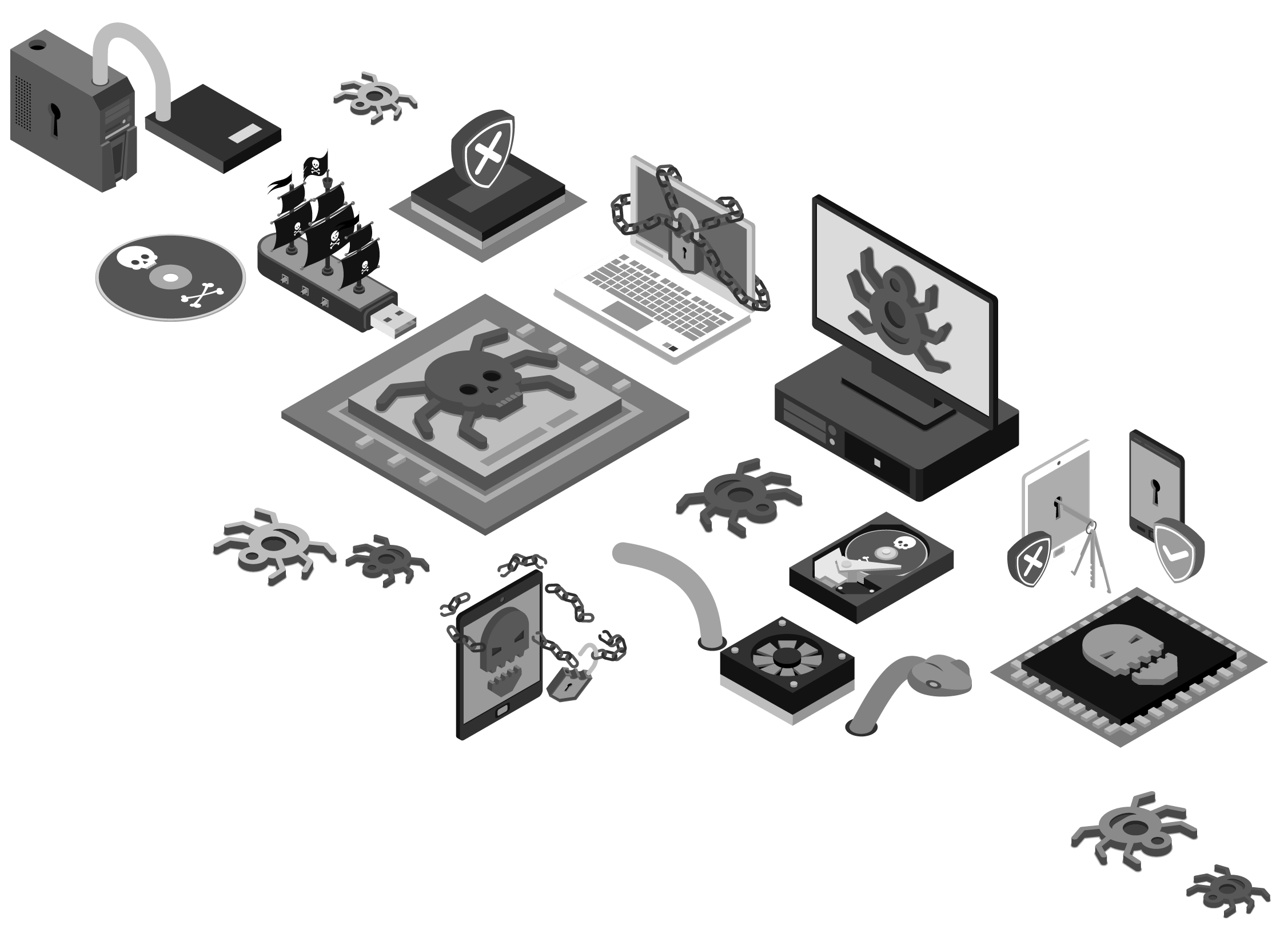TYPES OF CYBER ATTACKS AND HOW TO PREVENT THEM
CYBER ATTACK STRATEGY #1
BOMBARD NETWORKS WITH MALWARE AROUND THE CLOCK
Cyber-criminals work 24/7 to exploit your weaknesses. Attackers use automated tools to execute exploits or to launch phishing emails throughout the day and night. Many businesses lack automated tools to help scrub traffic, protect endpoints and filter out bad email.Others run firewalls that can’t see into encrypted traffic for hidden threats or rely on limited onboard system memory to store malware signatures.

COUNTER ATTACK #1
PROTECT YOUR NETWORK EVERY MINUTE OF EVERY DAY
Insist on a security platform that leverages the power of the cloud for real-time countermeasures to the latest malware threats. With hundreds of new malware variants developed every hour, organizations need up-to-the-minute, real-time protection against the latest threats. An effective security solution needs to be continuously updated, 24 hours a day, 7 days a week. In addition, because the number of malware types and variants is so large, it exceeds the available memory of any firewall.

CYBER ATTACK STRATEGY #2
INFECT NETWORKS WITH DIFFERENT FORMS OF MALWARE
Cyber-criminals use different types of attack vectors and malware to compromise networks. The five most typical types are viruses, worms, Trojans, spyware and ransomware.

COUNTER ATTACK #2
ENSURE THAT YOUR NETWORK IS PROTECTED AGAINST ALL TYPES OF MALWARE
To Stay ahead of threats, consider multiple layers of protection against malware. All firewalls should safeguard organizations from viruses, worms, Trojans, spyware and ransomware. This is best accomplished by integrating these protections into a singlepass, low-latency approach that blocks attack vectors not only at the gateway, but also at endpoints beyond the traditional perimeter. Look for features that include:
- Network-based malware protection to block attackers from downloading or transmitting malware to a compromised system
- Continuous and timely updates to safeguard networks around the clock from millions of new malware variants as soon as they are discovered
- Intrusion prevention service (IPS) to prevent attackers from exploiting network vulnerabilities
- Network sandboxing to send suspicious code to a cloudbased isolated environment for detonation and analysis to find never-before-seen malware
- Access security to apply security countermeasures at mobile and remote endpoints, both inside and outside of the network perimeter
- Email security to block phishing, spam, Trojans and social engineering attacks transmitted via email
CYBER ATTACK STRATEGY #3
FIND AND COMPROMISE THE WEAKEST NETWORKS
Cyber criminals often target their victims based on the network weaknesses they discover. Organizations that use inferior firewalls may believe their networks are protected, even though skilled criminals can sneak past the intrusion prevention system by using complicated algorithms to evade detection and compromise the system. Another weak link in network security is the human factor. Criminals use phishing scams to gain login and other authorization information that can enable them to simply sidestep firewall protections by instigating attacks from the inside. Also, employees are can lose mobile devices or expose them to breach when they are used outside of the network security perimeter.

COUNTER ATTACK #3
CHOOSE A COMPREHENSIVE SECURITY PLATFORM THAT OFFERS SUPERIOR THREAT PROTECTION AND HIGH PERFORMANCE
All firewalls need an engine that protects networks from both internal and internal attacks without compromising performance. Look for security solutions that have been independently tested and certified for network-based malware protection by ICSA Labs. Consider a multi-core platform design that can scan files of any size and type to respond to changing traffic flows. Look for a firewall that offers a network sandbox to help discover brand new malware that may be targeted at your environment. Your security strategy must include protection of mobile and remote endpoints both inside and outside the perimeter. In addition, you need email security to protect against phishing, spam, viruses, social engineering and other threats transmitted via email.

CYBER ATTACK STRATEGY #4
MORPH FREQUENTLY AND ATTACK GLOBALLY
Many cyber-criminals succeed by continually reinventing new malware and sharing it with their counterparts around the globe. This means that new threats are popping up every hour on all continents.

COUNTER ATTACK #4
CHOOSE A FIREWALL THAT PROTECTS AGAINST GLOBAL THREATS
In order to rapidly deploy countermeasures against emerging threats onto your firewall, look for a security solutions provider that has its own rapid-response, in-house team of countermeasure experts. In addition, that team should extend its reach by collaborating with the broader security community. A broad-spectrum solution utilizes a globally comprehensive cloud-based malware catalogue to augment local firewall analysis. Finally, while a simple firewall can identify and block by geography, a sophisticated firewall will add botnet filtering capabilities to reduce exposure to known global threats by blocking traffic from dangerous domains or blocking connections to and from a particular location.

